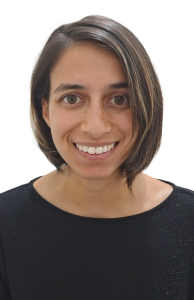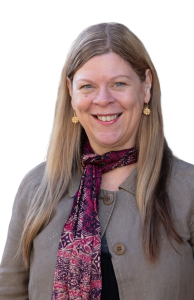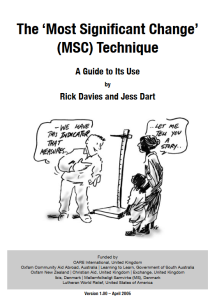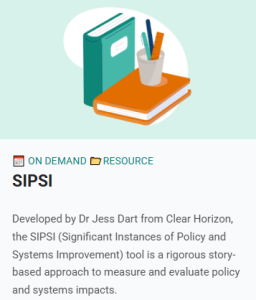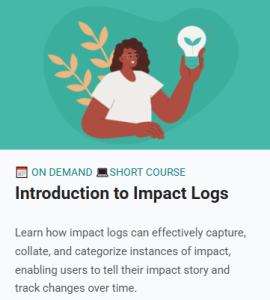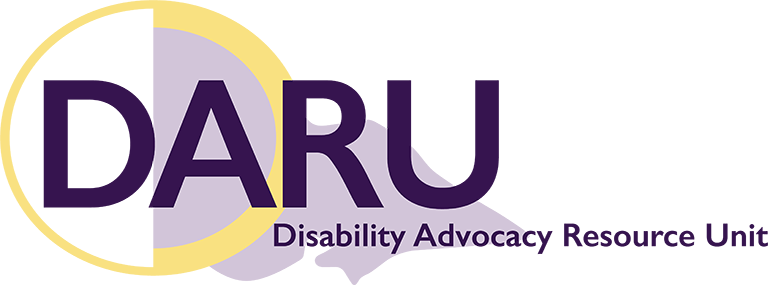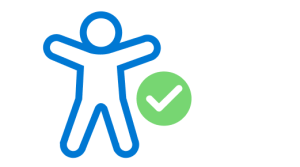What’s in your MEL Toolkit?
Written by: Mathilde Wennevold
This article is based on our webinar
‘What’s in your MEL Toolkit,’
facilitated by Ellise Barkley with guests
Dr Jess Dart, Bardie Barclay-Sutton, and Jessica Suares.
Watch the full webinar here!
What’s the difference between evaluation that ticks a box and evaluation that changes lives?
It’s not just what you measure. It’s how you listen, who’s involved, and what you do with the insight. That’s what came through loud and clear in Clear Horizon’s recent Ripple Effect webinar, “What’s in Your MEL Toolkit?”
Three evaluation practitioners – Dr Jess Dart (the co-author of the MSC user guide), Jessica Suares, and Bardie Barclay-Sutton sat down with Ellise Barkley to open their toolkits and share what’s working for them in their work. What emerged was more than a list of methods: it was a snapshot of MEL at its most thoughtful, adaptive, and human. Here’s what we took away, and why it matters.
The process is the product
Too often, tools are framed as technical assets. However, some of the most powerful tools are process tools— the ones that shape who gets to speak, how decisions are made, and what’s valued along the way.
That’s why Bardie Barclay-Sutton led with a deceptively simple piece of tech: Miro. It’s an online whiteboard tool that you can use for co-design, participatory analysis, and collective sense-making, even across countries and time zones.
But it’s not about the tool. It’s what it makes possible.
“Miro lets you surface more voices – especially the quieter ones,” Bardie said.
“It enables collaboration that’s democratic, reflective, and visually rich.”
Sticky notes. Anonymous voting. Asynchronous commenting.
These small design features can completely shift group dynamics, giving people space to contribute without hierarchy or fear.
The message? If you care about equity, inclusion, and learning, your facilitation tools matter just as much as your data tools.
Bardie Barclay-Sutton, International Development Consultant
Jessica Suares, Social Impact Consultant
Design for inclusion from the start
Participation doesn’t happen by default. It has to be designed – deliberately, sensitively, and often with small behavioural nudges.
Jessica Suares, who works in place-based and social impact initiatives, reminded us that inclusive MEL starts in the room, whether it’s virtual or face-to-face.
“If you’re chairing a session and say, ‘Feel free to stretch,’ but don’t model it yourself, no one moves,” she said.
“As facilitators, we need to set the tone. Make space for difference. Create moments for people to have agency.”
Another simple but powerful idea? Asynchronous meetings. For those who need more time to digest or can’t join live due to caregiving or access issues, asynchronous collaboration (like commenting on shared docs or Slack threads) creates new entry points for engagement. It’s not just flexible, it’s fair. “Inclusion,” she said, “gives people genuine choice.”
Stories aren’t soft, they’re strategy
When you’re navigating systems change, complexity, or uncertainty, hard data only gets you so far. That’s why stories remain at the heart of Jess Dart’s MEL practice, even after 20+ years in the field.
She revisited one of her enduring favourites: the Most Significant Change (MSC) technique.
“I resisted presenting on MSC recently – it felt a bit like my ‘one-hit wonder’. But it landed. Because it’s still one of our most practical, powerful methods.”
MSC is a participatory, story-based approach in which people share and reflect on the most meaningful changes they’ve experienced. But the secret sauce isn’t just in the story collection – it’s in the group dialogue about what matters and why.
“It surfaces values. It makes impact human again. And it can be done by community members, not just experts.”
Jess called MSC a “gateway tool” – an ideal entry point for practitioners wanting to explore more reflective, qualitative, or equity-oriented evaluation.
Are you curious about the MSC method? Join our Most Significant Change course!
Dr Jess Dart, CEO and Founder of Clear Horizon
Small stories lead to big insights
Not every story needs to be formal. Sometimes, what’s needed is fast, nimble insight from people on the ground.
That’s where impact logging comes in.
“Think of it as citizen monitoring,” said Jess.
“It’s a way for many eyes and ears to capture emerging change – shifts in policy, power, or practice – before they’re visible in the data.”
It’s a potent tool for systems change initiatives where cause and effect aren’t linear, and traditional metrics miss the nuance. When you spot something big, you can deepen the analysis into a contribution story—a narrative backed by multiple lines of evidence.
Matrix your way to clarity
While stories add depth, strong synthesis needs structure. Jessica Suares demoed her go-to method: a simple but powerful Excel framework matrix.
Rows = Data sources.
Columns = Key evaluation questions or themes.
The result? A bird’s-eye view of what’s being said, by whom, and where gaps exist.
“If a Key Evaluation Question (KEQ) is only supported by one source, I know I need to go back and fill that gap. It’s simple, scalable, and easy to tag or filter.”
It’s accessible for newer practitioners yet practical enough for experienced evaluators. For larger datasets, you can scale up to software like NVivo, but Excel is often faster and more transparent for small-to-medium projects.
You can learn more about Framework Matrices here.
Visualise what matters, live
Finally, Bardie reminded us that analysis isn’t the end. We need tools that help teams make meaning together and act on what they learn.
That’s where Power BI comes in.
“It’s not just for dashboards, it’s for decision-making,”
In a four-year community engagement program in PNG, teams used Power BI not just to monitor activity but also to reflect together each quarter on what to adapt, change, or stop doing. Filters allowed them to instantly explore patterns across time, gender, or geography, turning raw data into insight.
“Dashboards help people move from collection to learning. That’s the real goal.”
For inspiration, check out our Top Five Power BI Outcomes Dashboards from 2023.
The key takeaway: Use tools in layers
No single method will give you everything. But in thoughtful combination, they unlock something greater:
- Stories bring meaning to metrics.
- Dashboards help us act in real time.
- Matrices organise our learning.
- Facilitation tools shape who gets heard.
And, as Jess Dart said in closing:
“The minimum viable product of good MEL? Know who you’re reaching. Know what’s happening for them. And hold on to the voices in the system—not just the numbers.”
Ready to keep learning?
Join our Complete Guide to Measurement, Evaluation & Learning (MEL) course to build a strong and confident foundation.
Add the MSC technique to your toolkit by joining our Most Significant Change course.
Browse our courses and free resources available here.
Accessibility tools for inclusive design:
Accessible colour palette generator: VENNGAGE
Courses for disability inclusion (see micro course on Inclusive Meetings): DARU – Disability Advocacy Resource Unit
(One of many) Facilitation tips and tricks: A Handy Guide to Facilitation



